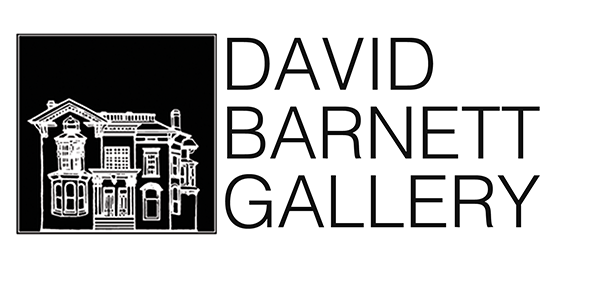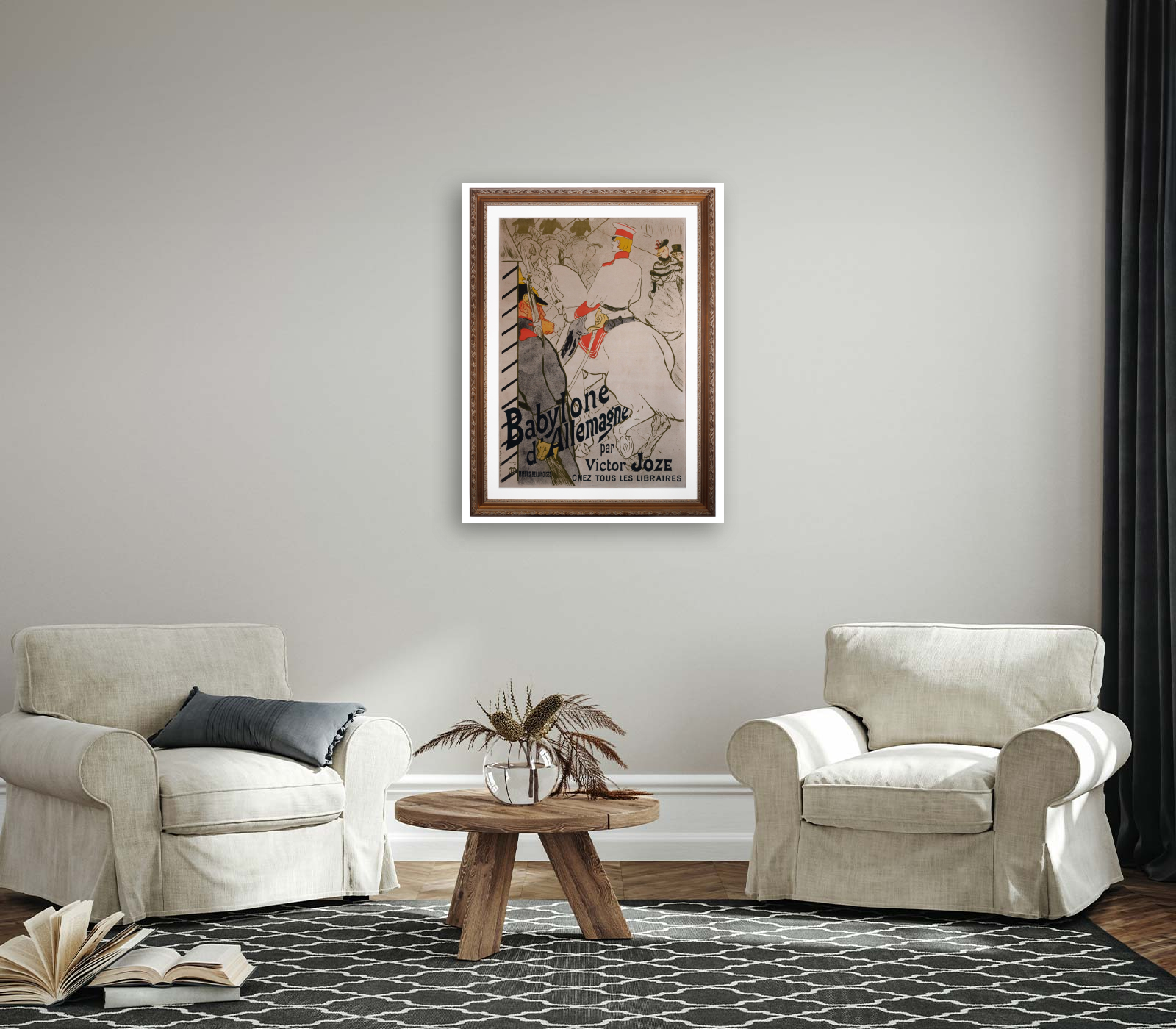

Babylone d'Allemagne (German Babylon)
Artist: Henri de Toulouse-Lautrec
Price:
$57,275.00
Medium: Prints


More Details
Creation Date: 1894
Materials: Brush and spatter lithograph
Dimensions: 47" x 33"
Condition: Very Good Condition, Restored in 2022
Finish: Framed
About the Item: "Babylone d'Allemagne" or "German Babylon" is an original lithograph poster by the lauded artist of the Art Nouveau style Henri de Toulouse-Lautrec. This is the second poster that Lautrec designed to advertise a novel by the Polish author Victor Joze. In the poster, a stiff Prussian officer sits atop a horse, a not-so-subtle jab at the German military. Indeed, the poster caused a stir, offending the German ambassador to France and nearly starting an international incident. The poster as it appears is the second state: the first state of the poster contains none of the text of the title of the book, which was added later by a hand other than that of Lautrec. The text of the poster reads: "Babylone d'Allemagne par Victor Joze chez tous les libraries," or "Babylon of Germany by Victor Joze at all libraries" Original color lithograph, brush and spatter technique used, printed in five colors on cream woven paper.
Artwork Size: 46 3/8" x 32 3/4"
Frame Size: 57 3/4" x 43 1/8"
Artwork Size: 46 3/8" x 32 3/4"
Frame Size: 57 3/4" x 43 1/8"

About The Artist
Henri De Toulouse-Lautrec (1864-1901) was born on November 24th in Albi, France to an aristocratic family. The artist's parents were first cousins, and inbreeding might have been the cause of many of Toulouse-Lautrec’s physical ailments. Henri Toulouse-Lautrec’s life was short; he died on September 9th, 1901, less than three months before his thirty-seventh birthday, from complications from alcoholism and syphilis. Although Toulouse-Lautrec died tragically at thirty-six and his career lasted just over a decade, he produced many influential works of art in an instantly recognizable style. From 1891-1901, the artist produced nearly 350 lithographic posters, editions, portfolios, and illustrations for journals and theatre programs. Significantly, his career coincided with the birth of modern printmaking and the explosion of nightlife culture. Lautrec was an innovator of lithographic techniques and adopted an avant-garde style in both his paintings and prints. For example, Lautrec employed the splattered ink technique called crachis to dramatic effect in his prints. He was heavily influenced by Japanese ukiyo-e prints which feature areas of flat color with bold outlines, silhouettes, cropped compositions, and oblique angles. And his choice of subject matter--actors, actresses, dancers, prostitutes, and those on the fringes of society--can be likened to the "floating world" of Edo-period Japan (1603-1867). In 1882, Toulouse-Lautrec moved to the Montmartre neighborhood of Paris. Montmartre boasted a thriving bohemian culture that was driven by its critique of bourgeois society. For Lautrec, who was shunned by aristocratic and bourgeois society and in turn rejected it, Montmartre was a haven and there is a certain elision between the artist himself and his portrayal of his subjects.
More Galleries to Explore












 Facebook
Facebook
 Twitter
Twitter
 Email
Email






















